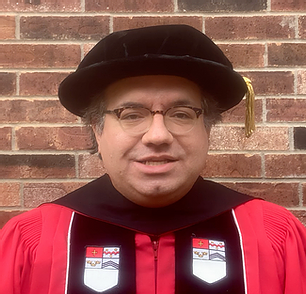As the use and understanding of the wide range of generative AI tools becomes more pervasive, the ways in which educational institutions talk about and value these tools will continue to become clearer. Is the use of generative AI tools a 21st century skillset that students will need to master? In what way should we think of the university as a space in which students develop this skillset? While we have seen recent concerns emerge around ChatGPT over the spring and summer, we have been heartened to discover UT faculty, instructors, and graduate students employing generative AI tools in innovative ways. During the recent "Image, Text, Code" session, we asked three innovative teachers and researchers to share their use of these tools with the UT community.

We began our discussion with Connor Phillips, PhD student in Community & Regional Planning. With an educational background in public health and urban planning and as an NSF Research Traineeship recipient, Connor has studied tobacco cessation programs, micro-mobility and health, and most recently, artificial intelligence in urban infrastructure. In his talk, Connor focused specifically on the ways in which his current use of AI bots is helping him to shape how we are able to design physical spaces that are more equitable. One project in particular, CitySculpt, employs generative AI tools like DALL-E, Stable Diffusion, and Midjourney to help facilitate financially sensible, sustainable urban designs, "showing the potential of image synthesis models to help folks democratize" the process.

While the possible ethical uses of generative AI tools for advancing innovation in professional fields are becoming clearer and more exciting, we are also deeply invested in discovering the appropriate uses of these tools in the classroom. We next turned to Dr. Julie Schell, Assistant Vice Provost of Academic Technology and the Director of the Office of Academic Technology at The University of Texas at Austin to lead our exploration. As an Assistant Professor of Practice in the Departments of Design and Educational Leadership and Policy, she teaches graduate and undergraduate studio-based courses, focusing on the synergies that bridge design, pedagogy, and technology to create meaningful learning experiences. After a deep dive into the image-based generative AI tools (focusing primarily on Midjourney), Julie clearly integrated these tools into her course design through a series of levels - from "instructor agnostic" (students can use and explore these tools) to "instructor encouraged" and "instructor required," Julie educated herself as well as her students on these utility of these tools. Determining their shared sense of self-efficacy through an instrument she created, Julie was able to both encourage the use of AI tools while finding out where students stiill need to be educated on what kind of impressions are created and how these tools function. Distinguishing between users dialoging with conversational AI (Siri, Alexa) and users creating something new with generative AI, Julie helps us navigate the definitional challenges that students are likely to face in the foreseeable future.

Finally, Dr. Kenneth R. Fleischmann, professor in the School of Information at UT Austin, spoke about the need to make students much more aware of how their lives are deeply embedded within technological systems. He is the Founding Chair of Good Systems, a UT Grand Challenge, and the Founding Director of Undergraduate Studies for the iSchool's B.A./B.S. in Informatics. Ken spoke about an assignment he is using to explore ethical distinctions between human agents and AI. How can humans and AI, for example, work in concert and through partnership. In his assignment, he asks students to identify an AI ethics dilemma, choose three ethical theorists, and use generative AI to predict how each of the ethical theorists would have reacted to the dilemmas. According to Ken, "a part of good systems is having human AI partnerships where humans are doing what humans do best and AI is doing what AI does best. What we humans can do best are things like how you'd compare these different answers, compare and contrast them."
Please feel free to explore the video recording of this session for more insights. Yet what connects our three speakers? We might say that the role of the student or researcher or end-user of generative AI tools in higher education is to close the loop: using AI for specific, well-defined tasks that are then critically assessed, ethically examined by, and folded back into human communities of learning and research for determinations of value.
Be on the lookout for future sessions of "Image Text Code" as we continue to stay on top of generative AI in teaching and learning at UT. If you would like to learn more, please do join our November workshops that focus on the use of generative AI for teaching and learning - no experience required.

